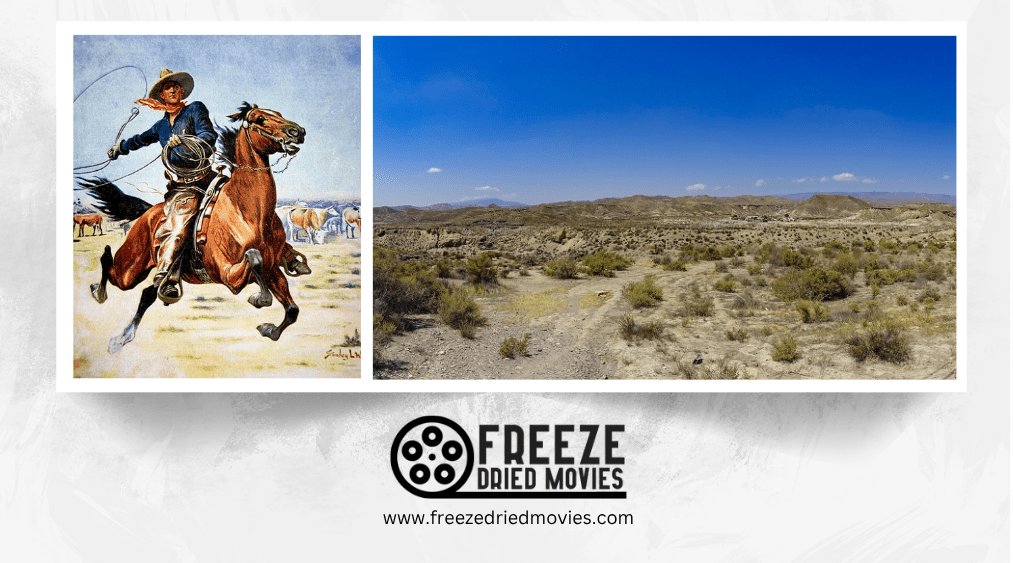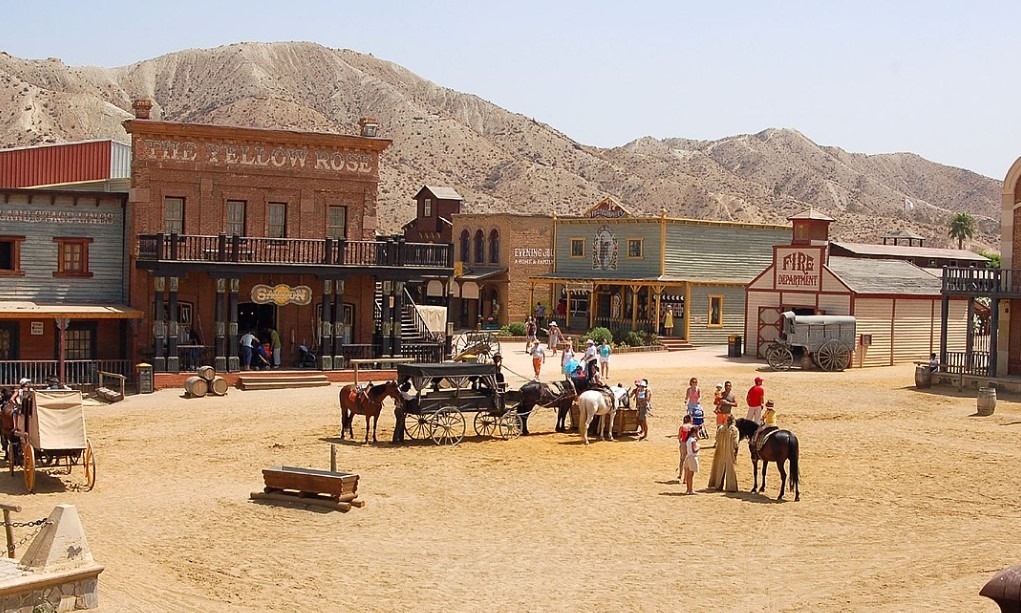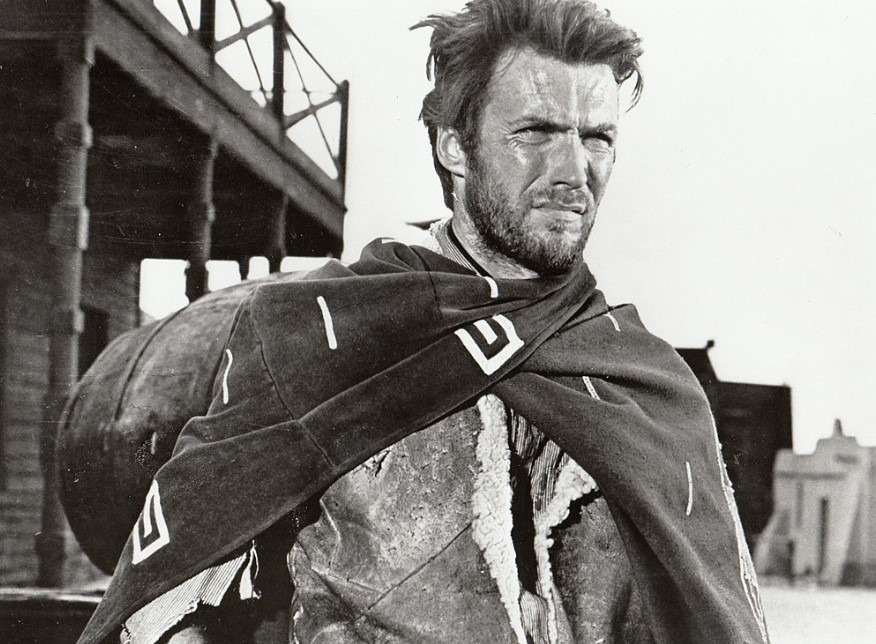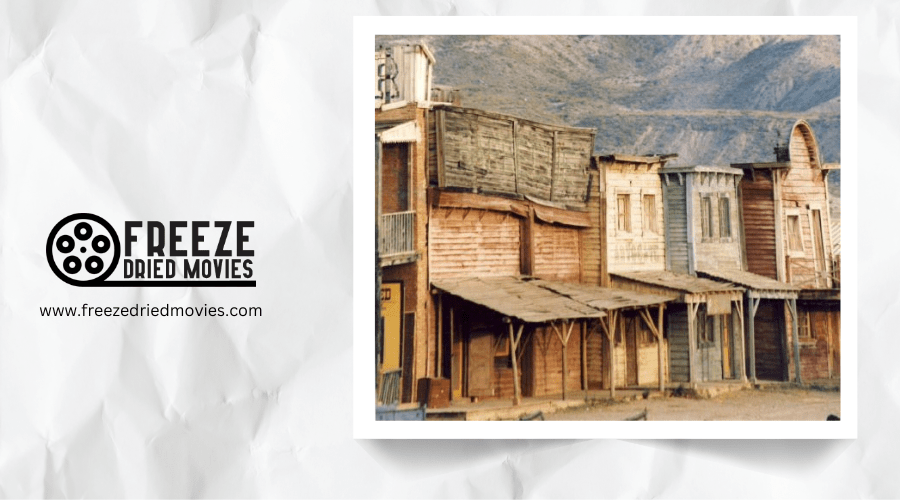Exploring Spain’s Tabernas Desert: Birthplace of Spaghetti Westerns

You've seen those iconic western showdowns with Clint Eastwood squinting under the desert sun, but did you know they weren't filmed in America? Spain's Tabernas Desert, Europe's only true desert, transformed into the American Wild West for dozens of classic films. When you walk through its dramatic landscapes today, you'll find yourself on the same ground where Leone crafted his masterpieces. The dusty streets and weathered saloons still stand, waiting for you to discover their stories.
The Hidden Gem of Almería: Europe's Only Desert
Nestled in Spain's southeastern province of Almería lies Europe's only desert, Tabernas—a remarkable hidden gem that has somehow escaped the clutches of mass tourism. This unique European desert once earned the nickname "Hollywood of Europe" for its starring role in numerous spaghetti western films.
The landscape's resemblance to the American West, with its striking badlands, canyons, and dry riverbeds, made it the perfect backdrop for legendary director Sergio Leone's iconic productions.
What makes Tabernas truly special is how it combines cinematic history with natural wonder. Despite hosting over 100 films at the Oasys MiniHollywood location during the 1960s and 1970s, the area remains remarkably undiscovered compared to Spain's coastal hotspots. Today, you can still explore the diverse terrain that once doubled for locations from the Wild West to Australia. These landscapes became instrumental in establishing the American frontier ethos that celebrated pioneering spirit, freedom, and justice in western cinema.

Sergio Leone and the Birth of Spaghetti Westerns
The legendary Italian filmmaker Sergio Leone stumbled upon the Tabernas Desert in 1964, forever changing both the landscape's destiny and cinema history. Recognizing the area's uncanny resemblance to America's Wild West, Leone constructed an entire frontier town where he'd shoot his groundbreaking "Dollars Trilogy" starring Clint Eastwood.
The Tabernas Desert became the perfect canvas for Spaghetti Westerns due to:
- Its dramatic, arid landscapes that authentically replicated the American frontier
- Considerably lower production costs compared to Hollywood sets
- The isolation needed to create Leone's distinctive visual style
In 1965, Leone filmed "The Good, the Bad and the Ugly" here—now considered one of the greatest Westerns ever made. Through his visionary work in Tabernas, Leone revolutionized the genre and launched Eastwood into international stardom. Like the scenic filming locations that Hollywood discovered in Washington State during the 1930s, Tabernas provided authentic backdrops that enhanced the visual storytelling.

Oasys MiniHollywood: Where Cinema History Lives On
While Leone's cameras have long since departed, the cinematic legacy of the Tabernas Desert thrives at Oasys MiniHollywood, where the dusty sets that once hosted gunfights and standoffs now welcome tourists instead of film crews.
Originally constructed by Sergio Leone in 1964 for his "Dollars Trilogy," these iconic Spaghetti Western sets have transformed into a vibrant attraction drawing 180,000 visitors yearly. You'll walk the same streets once stalked by Clint Eastwood, Eli Wallach, and Lee Van Cleef in the genre's golden era.
Diego García Ceba, a veteran performer turned manager, helps preserve the authentic western atmosphere through live re-enactments. Beyond its film heritage, the park now features a zoo and plans to expand with a boarding house-style hotel. The park's immersive experience captures the evolution of Western films that occurred in the 1940s when directors like John Ford and Hawks revolutionized the genre with greater character depth and moral complexity.
Fort Bravo: Stepping Into the Wild West
Nostalgia permeates every dusty corner of Fort Bravo, another cinematic treasure in the Tabernas Desert that invites you to experience authentic Wild West excitement. Unlike Mini Hollywood, this spaghetti western set retains its 1970s frontier town charm, offering a glimpse into the golden era when Sergio Leone's masterpieces dominated these landscapes.
You'll be transported back in time as you:
- Watch bombastic cowboy shows featuring veteran performers with decades of experience
- Breathe in the intoxicating smell of gunpowder during thrilling western shootouts
- Explore the meticulously preserved film sets where cinema history was made
Fort Bravo delivers a "Wild West extravaganza" that celebrates the legacy of these iconic films, making it an essential stop for anyone exploring the Western film sets that made Tabernas famous.

Walking Tours: Following in the Footsteps of Clint Eastwood
For film enthusiasts who dream of connecting intimately with cinema history, Tabernas Desert's specialized walking tours provide an immersive journey through the iconic landscapes where Clint Eastwood transformed into "The Man With No Name." These guided explorations take you beyond the constructed film sets to authentic wilderness locations where Sergio Leone's camera captured the vast, unforgiving terrain that would become synonymous with the Spaghetti Western genre.
Companies like Spanish Highs Mountain Guides, Tuco Tours, and Malcaminos offer half-day to multi-day excursions to specific filming locations. You'll visit landmarks like Crocodile Rock, featured prominently in classic Spaghetti Westerns including "The Good, The Bad and The Ugly" and "Fistful of Dollars." For devoted fans, Eastwood's official website provides supplementary information to enhance your desert pilgrimage through these cinematic hallowed grounds.
Environmental Challenges and Community Preservation Efforts
Numerous environmental threats now endanger the Tabernas Desert's iconic landscapes, transforming Spain's only true desert from a cinematic treasure into an ecological concern. Where Sergio Leone once filmed his legendary Westerns, you'll now find a fragile environment battling against litter and waste.
The non-profit P3 Ambiental, founded by Julian Phillips, works to preserve these historic film locations despite limited official support.
A new documentary project seeks to save this environment through:
- Raising awareness via crowdfunding campaigns
- Organizing volunteer-led clean-up initiatives
- Drawing parallels between Western film themes and ecological preservation
You can join these community preservation efforts, which have already shown gradual improvements. Despite claims that problems are exaggerated, much work remains to protect the desert that gave birth to cinema's most influential Western landscapes.
The Cultural Legacy of Tabernas in Cinema History
When Sergio Leone first pointed his camera at the rugged badlands of Tabernas in the early 1960s, he unwittingly transformed this Spanish desert into hallowed ground for cinema enthusiasts worldwide. His iconic "Dollars Trilogy" established Tabernas Desert as the "Hollywood of Europe," where over 100 spaghetti westerns were filmed at the Oasys MiniHollywood set during the genre's golden age.
The dramatic badlands that hosted legendary scenes like the "Crocodile Rock" sequence remain largely unchanged. In fact, you can even purchase a piece of film history—the 8-hectare spaghetti western set used in "Once Upon a Time in the West" is currently available for €2.8 million.
You can witness this rich heritage at the Tabernas Western Film Festival, celebrating the region's cinematic importance for over a decade.
Emilio del Prado, Town square in Mini Hollywood, CC BY-SA 2.0



